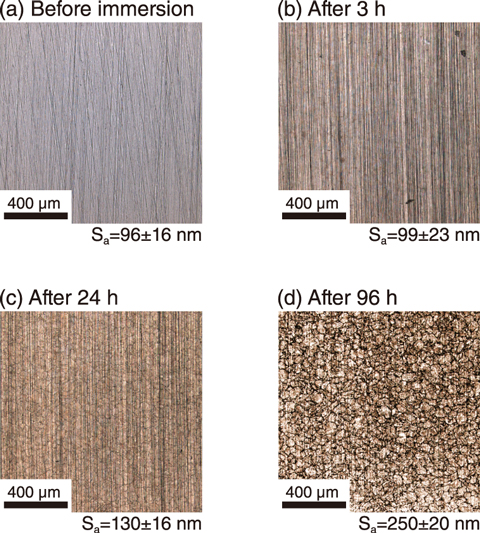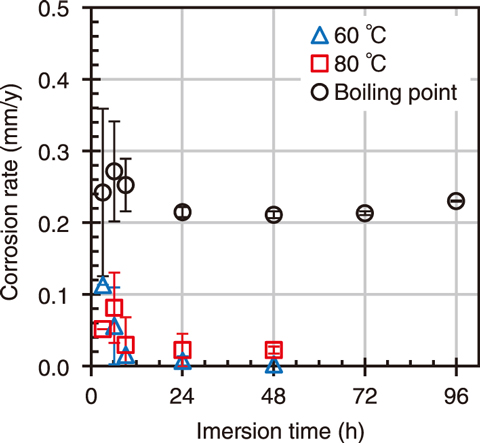
Fig.8-30 Specimen surface before and after immersion in a boiling nitric acid solution

Fig.8-31 Corrosion rates of the FeCrAl-ODS steel in 3 mol/dm3 nitric acid solution at different temperatures
Hydrogen generated from the oxidation of zirconium (Zr) -alloys used in various components on light-water reactors is believed to have caused the explosion at the TEPCO’s Fukushima Daiichi NPS. FeCrAl-oxide dispersion strengthened (ODS) steels have been developed for accident-tolerant fuel cladding of light water reactors and are expected to enhance accident tolerance more than did Zr-alloys.
The reprocessing of spent nuclear fuel having Zr-alloy cladding has been established, as has the behavior of Zr-alloys in the reprocessing process. However, the behavior of FeCrAl-ODS steels in the reprocessing process remains uncertain. Therefore, the corrosion behavior of FeCrAl-ODS steel during the dissolution process, which is the first chemical process in the reprocessing process, was evaluated.
As in the fuel dissolution process, simulated fuel cladding specimens were immersed into a high-temperature solution with a high concentration of nitric acid (3 mol/dm3, as is the operational concentration in the dissolver). After several hours of immersion, the specimen was weighed and its surface was observed. The resulting variation of the specimen surface in the immersion experiment is shown in Figs.8-30(a)-(d). After 3 h of immersion, no clear sign of corrosion was observed, indicating a favorable corrosion resistance of FeCrAl-ODS steel. The resulting corrosion rate is shown in Fig.8-31, indicating that FeCrAl-ODS steel has a better corrosion resistance than does stainless steels utilized for component of reprocessing process.
The behavior of elements on the top surface of the FeCrAl-ODS steel specimen shown in Fig.8-30(d) was investigated via X-ray photoelectron spectroscopy (XPS). The results indicated that an oxide film was generated on the top surface and iron (Fe) was selectively dissolved from the oxide film. Chromium (Cr) and aluminum (Al) remained as oxides on the top surface.
The strong oxide film generated on the top surface provided the good corrosion resistance of FeCrAl-ODS steel. It is necessary to evaluate the effects of various elements and radiation in spent nuclear fuel, because these are important factors for corrosion under actual dissolution conditions. Future work will involve evaluating the corrosion behavior of FeCrAl-ODS steels similar conditions, and the effect of corrosion products on reprocessing process will be investigated.
This study was part of the result conducted “Development of a Technical Basis for Introducing Advanced Fuels Contributing to Safety Improvement of Current Light Water Reactors”, carried out under the project “Development of a Technical Basis for Safety Improvement at Nuclear Power Plants”, and sponsored by the Agency for Natural Resources and Energy (ANRE), the Ministry of Economy, Trade and Industry (METI), Japan.